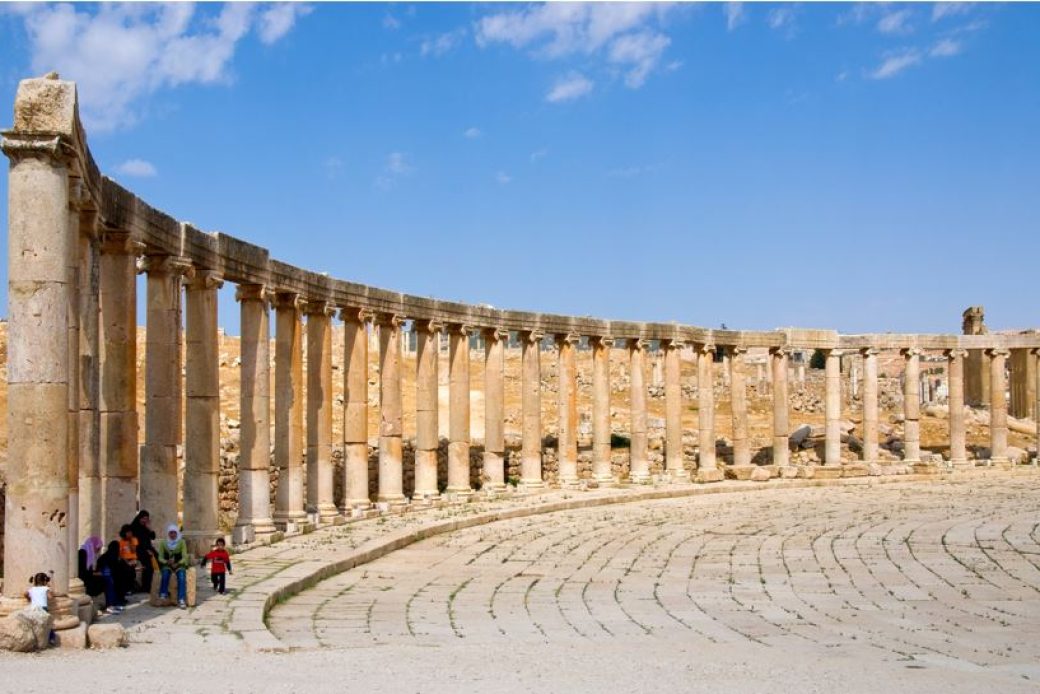Be Fascinated By The Land Of Ancient Wonders And Natural Beauty
Jordan is a country that has long captivated travelers from around the world with its stunning ancient ruins, desert landscapes, and vibrant culture. From the mystical city of Petra to the Dead Sea, Jordan offers a unique and unforgettable travel experience. In this article, we will explore the history of the holy Land of Jordan.
Religious History
Jordan has the most fascinating biblical history.
It is the site of significant events in the history of Christianity from the new and the old testaments. It is because of this religious significance that sites all around Jordan have been designated as pilgrimage sites.
Sites of the biblical history of Jordan:
- Jordan River: Where the baptism of Jesus Christ by John The Baptist happened.
- Hill of Elijah: Where Prophet Elijah ascended to heaven.
- Pisgah/ Mount Nebo: Where Moses overlooked the Holy land but did not enter.
- Prophet’s Elijah shrine
- Jerash
- Petra
- Lot’s Cave e.t.c
Tracing Islam In Jordan
The land today the Hameshite kingdom of Jordan has been constantly settled throughout every single period of history since 9500 BC. It has always been a critical bridge between Africa, Asia, and Europe, and its neighbors, the great civilizations of the ancient world, have always sought to control it.
For Muslims, Jordan is a country with a rich religious history that is also blessed with many important holy shrines and tombs. Visiting these sites is approved behavior in Islam. Here the faithful can study, enhance and strengthen their faith.
Located between Mecca the holiest place on earth for Muslims, and Jerusalem, sacred to three great monotheistic religions, Jordan has played a central role in the history of Ahl-ul-Kitab(people of the book).
Political History
Jordan is a country in the Near East bordered by Israel, Syria, Iraq, and Saudi Arabia which was part of the Land of Canaan in ancient times. The country is named for the river Jordan which flows between modern-day Jordan and Israel and whose name means “to descend” or “flow downwards”.
In 1920, Prince Abdullah bin Hussein arrived in the southern city of Maan and stayed there for four months, where he met with the Jordanian tribes to make the necessary arrangements to establish the Jordanian state, and then moved to Amman, where he arrived on March 2, 1921. The day when Prince Abdullah arrived in Amman, he started to establish the Jordanian state, he declared the establishment of the Emirate of Jordan (Emirate East Jordan) on March 30, 1921, and he chose Amman to be its capital.
The first Jordanian government was established in the east of Jordan on April 11, 1921. It was known as the Consultative Council, which started with the establishment of the army (the Arab Army). It was collected from officers and soldiers who served in the Great Arab Revolutionary Army. The emirate remained under the British Mandate. The population of eastern Jordan in 1921 reached 400 thousand of people.
In 1946, Jordan became officially an independent state, known as the Hashemite Kingdom of Transjordan. However, it was renamed the Hashemite Kingdom of Jordan post the country took over the West Bank during the Arab–Israeli War of 1948.
Jordan has a great role in founding the Arab League and the Organization of Islamic Co-operation. The sovereign state is a constitutional monarchy, but the king holds wide executive and legislative powers.
Jordan is considered a country of “high human development” with an “upper middle income” economy. The Jordanian economy is one of the simplest economies in the region, mainly based on tourism. The country is a major tourist destination due to its numerous historical sites and beautiful nature.
Historical Sites
Petra: Petra is one of the most famous and fascinating archaeological sites in the world. It is an ancient city carved into the red rock cliffs of the Jordanian desert, dating back to 312 BC. This UNESCO World Heritage site is a true marvel of human engineering and ingenuity. Don’t miss the iconic Treasury building, the Monastery, and the Amphitheater.
Jerash: Jerash is an ancient Roman city that has been remarkably preserved, offering visitors a glimpse into the past. The city was founded in the 4th century BC and was an important stop on the trade routes between Syria and the Mediterranean.

Madaba: Madaba is a small town famous for its Byzantine and Umayyad mosaics. The most famous is the Madaba Map, which is the oldest surviving map of the Holy Land. You can also visit the Saint George Church, which has a floor covered with stunning mosaics.
Touristic Sites
Dead Sea: The Dead Sea is the lowest point on earth and a popular tourist destination. Known for its mineral-rich waters and healing properties, it’s a great place to relax and rejuvenate. You can also try floating in the sea, taking a mud bath, and enjoying the stunning desert scenery.

Wadi Rum: Wadi Rum is a vast desert wilderness in southern Jordan that is famous for its unique rock formations, stunning landscapes, and Bedouin culture. You can go on a jeep or camel safari, camp under the stars, and enjoy the breathtaking views.
Aqaba: Aqaba is a popular beach resort town on the Red Sea, known for its crystal-clear waters, coral reefs, and water sports. You can go snorkeling or diving, take a boat tour, and enjoy the local cuisine.
Go Places Recommended Destination
Jordan is a destination that should be on every traveler’s bucket list. With its rich history, stunning landscapes, and warm hospitality, Jordan offers a unique and unforgettable experience.
Go places shall take you on a journey to an editor’s experience to entice you more to book your next flight to Jordan.
Contact to book your next holiday to Jordan contact:
Email: hussein@goplacesholidays.com or click here to contact us on WhatsApp




